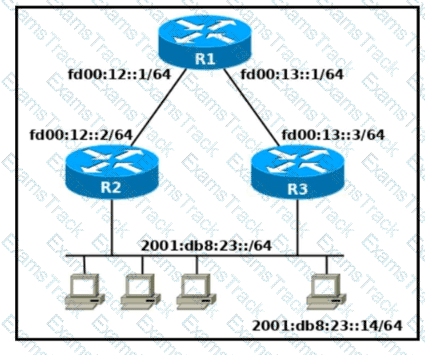
Refer to the exhibit. Which two commands, when configured on router R1. fulfill these requirements? (Choose two.) ' Packets toward the entire network 2001:db8:23: :/64 must be forwarded through router R2. ' Packets toward host 2001: db8:23::14 preferably must be forwarded through R3.
How does automation affect network management processes?
Which two QoS tools provide congestion management? (Choose two.)
What is a characteristic of a Layer 2 switch?
Which header must be included in a REST request from an application that requires JSON-formatted content?
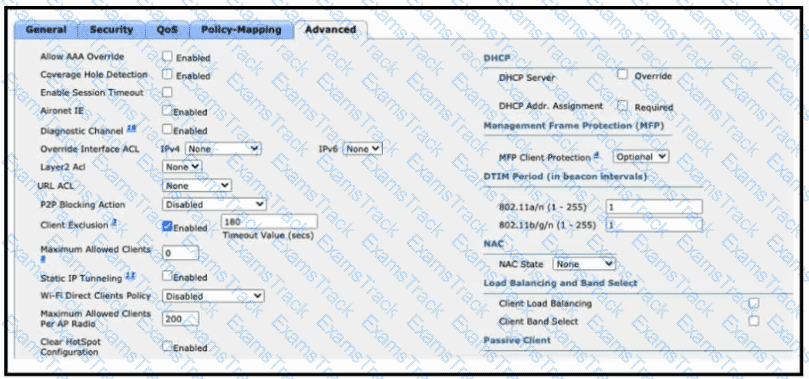
Refer to the exhibit. An administrator is configuring a new WLAN for a wireless network that has these requirements:
Dual-band clients that connect to the WLAN must be directed to the 5-GHz spectrum.
Wireless clients on this WLAN must be able to apply VLAN settings from RADIUS attributes.
Which two actions meet these requirements? (Choose two.)

Three switches must be configured for Layer 2 connectivity. The company requires only the designated VLANs to be configured on their respective switches and permitted accross any links between switches for security purposes. Do not modify or delete VTP configurations.
The network needs two user-defined VLANs configured:
VLAN 110: MARKETING
VLAN 210: FINANCE
1. Configure the VLANs on the designated switches and assign them as access ports to the interfaces connected to the PCs.
2. Configure the e0/2 interfaces on Sw1 and Sw2 as 802.1q trunks with only the required VLANs permitted.
3. Configure the e0/3 interfaces on Sw2 and Sw3 as 802.1q trunks with only the required VLANs permitted.
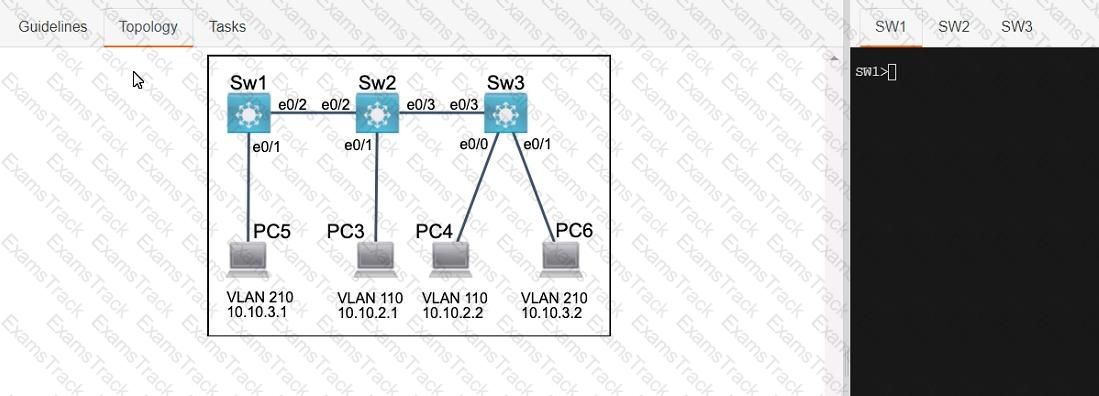

Refer to the exhibit. The static routes were implemented on the border router. What is the next hop IP address for a ping sent to 172.16.153.154 from the border router?
Which interface is used to send traffic to the destination network?
O 10.18.75.113/27 [110/6906] via GO/6
O 10.18.75.113/27 [110/23018] via GO/3
R 10.18.75.113/27 [120/16] via GO/16
R 10.18.75.113/27 [120/14] via GO/23
Which interface condition is occurring in this output?
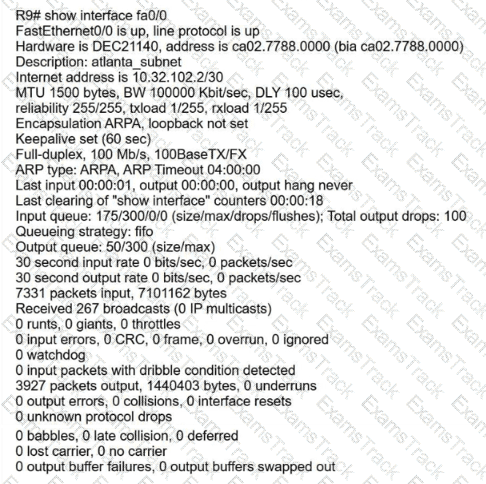
Which interface is used to send traffic to the destination network?
10.90.207.87/26 [110/1912] via F0/7
10.90.207.87/26 [110/28968] via F0/6
10.90.207.87/26 [120/14] via F0/4
10.90.207.87/26 [120/11] via F0/5

Refer to the exhibit. Which configuration enables SW2 to establish an LACP EtherChannel?
What are two facts that differentiate optical fiber cabling from copper cabling? (Choose two.)
Drag and drop the IPv6 address from the left onto the type on the right.
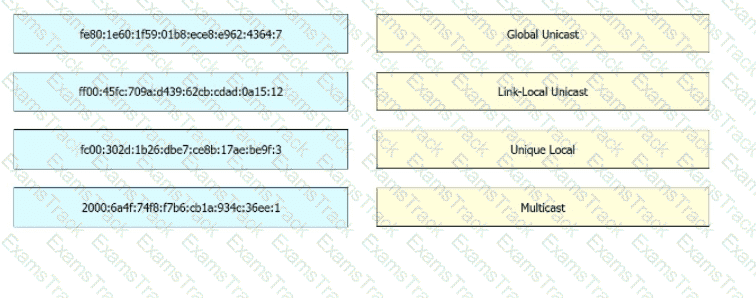
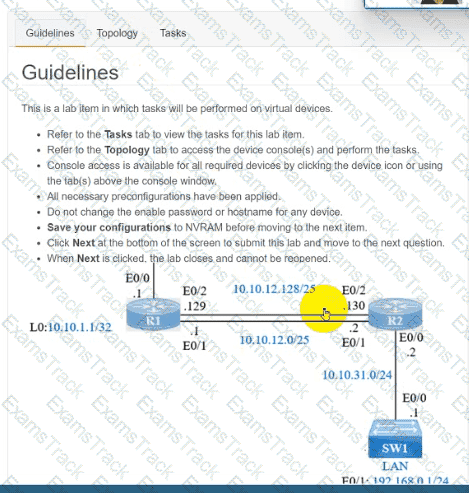
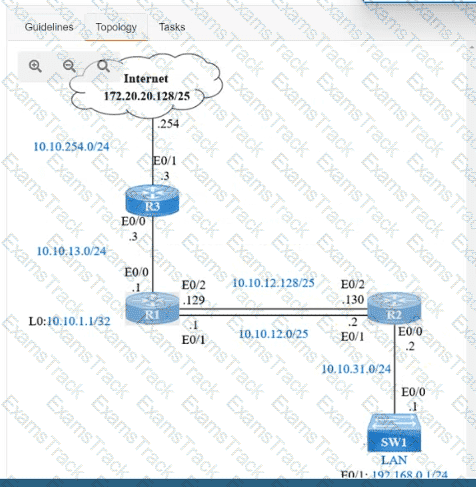

IP connectivity and OSPF are preconfigured on all devices where necessary. Do not make any changes to the IP addressing or OSPF. The company policy uses connected interfaces and next hops when configuring static routes except for load balancing or redundancy without floating static. Connectivity must be established between subnet 172.20.20.128/25 on the Internet and the LAN at 192.168.0.0/24 connected to SW1:
1. Configure reachability to the switch SW1 LAN subnet in router R2.
2. Configure default reachability to the Internet subnet in router R1.
3. Configure a single static route in router R2 to reach to the Internet subnet considering both redundant links between routers R1 and R2. A default route is NOT allowed in router R2.
4. Configure a static route in router R1 toward the switch SW1 LAN subnet where the primary link must be through Ethernet0/1. and the backup link must be through Ethernet0/2 using a floating route. Use the minimal administrative distance value when required.
An engineer is tasked to configure a switch with port security to ensure devices that forward unicasts multicasts and broadcasts are unable to flood the port The port must be configured to permit only two random MAC addresses at a time Drag and drop the required configuration commands from the left onto the sequence on the right Not all commands are used.
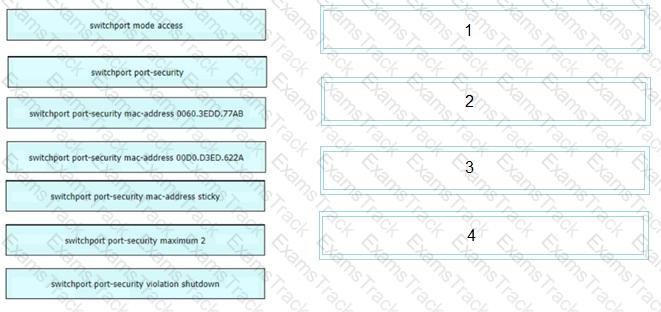
What is the maximum length of characters used in an SSID?
Refer to the exhibit.
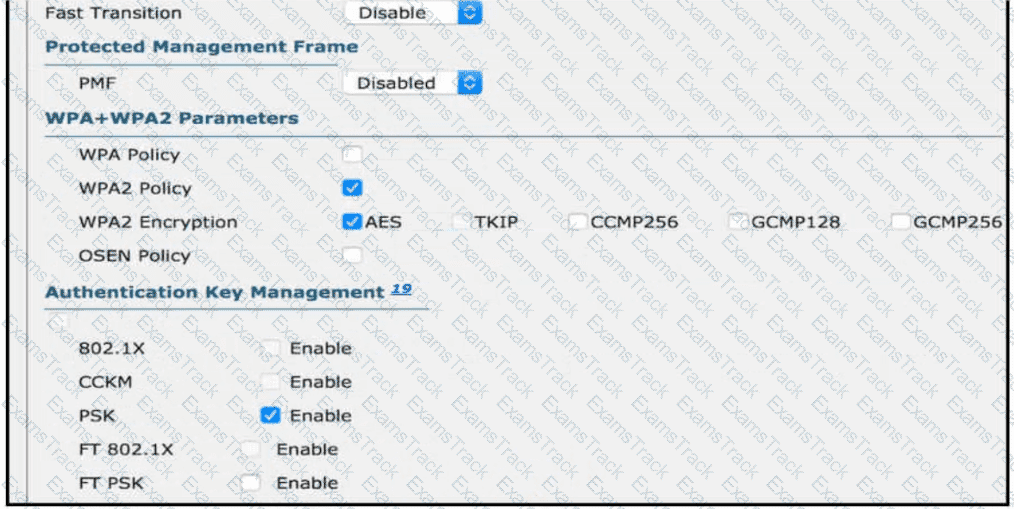
Users need to connect to the wireless network with IEEE 802. 11r-compatible devices. The connection must be maintained as users travel between floors or to other areas in the building What must be the configuration of the connection?
Refer to the exhibit.
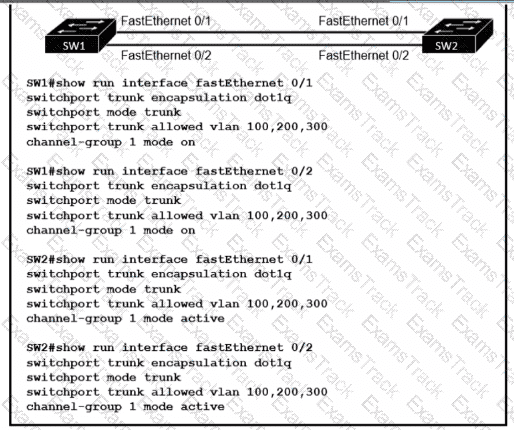
An engineer built a new L2 LACP EtherChannel between SW1 and SW2 and executed these show commands to verify the work. Which additional task allows the two switches to establish an LACP port channel?
|
PDF + Testing Engine
|
|---|
|
$61.25 |
|
Testing Engine
|
|---|
|
$47.25 |
|
PDF (Q&A)
|
|---|
|
$40.25 |
Cisco Free Exams |
|---|

|